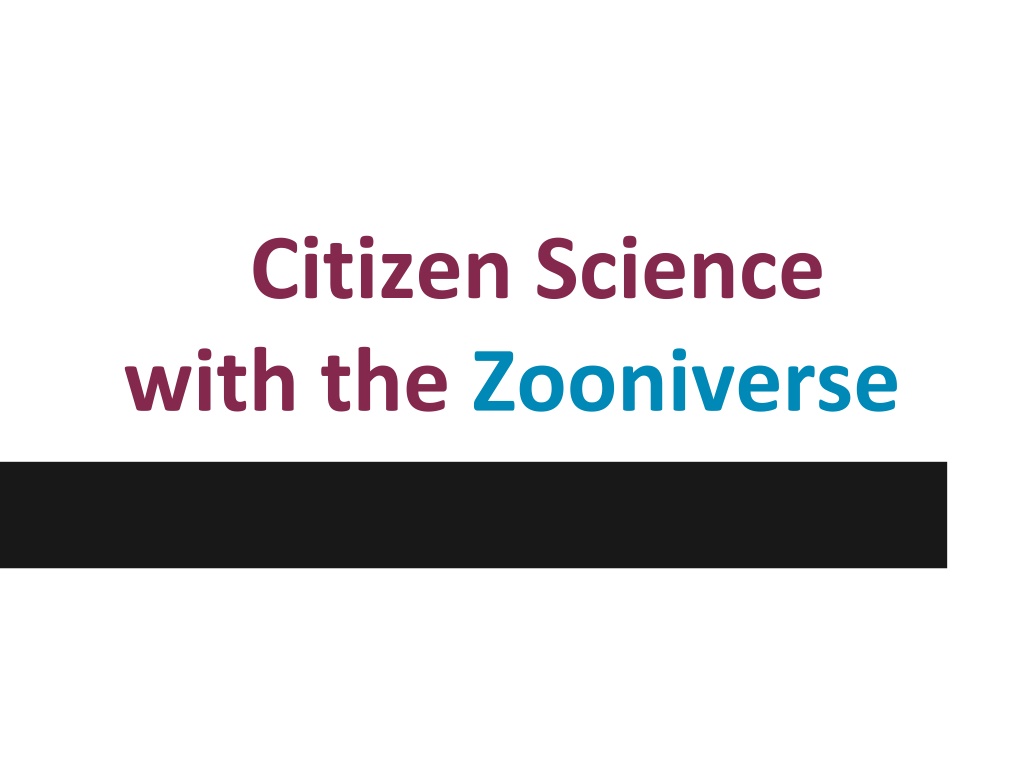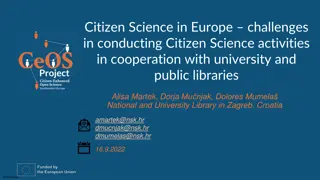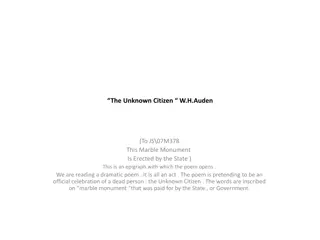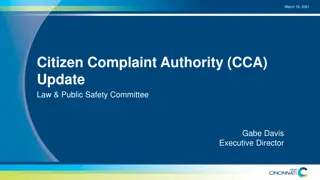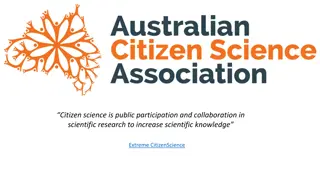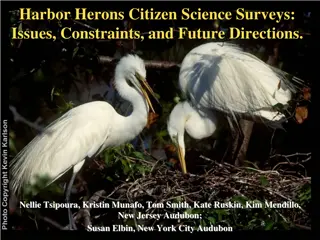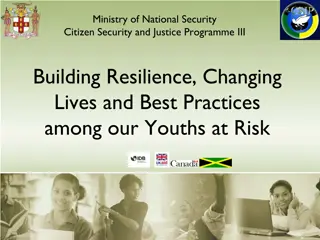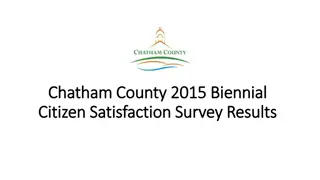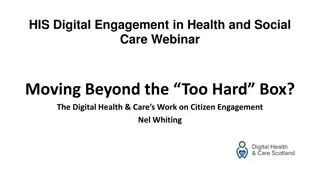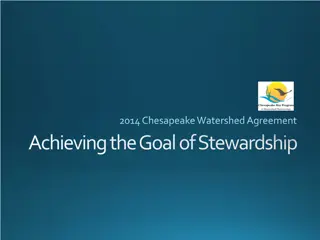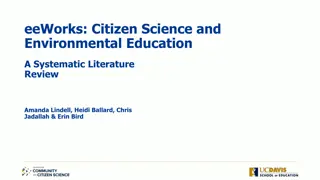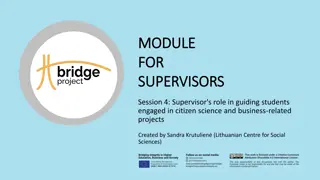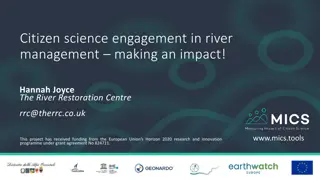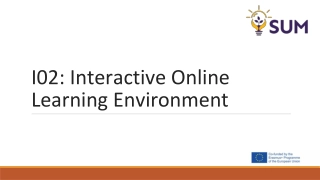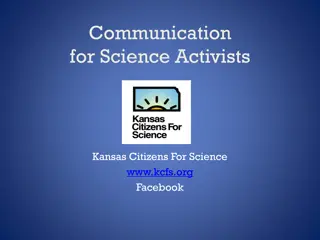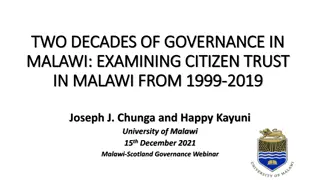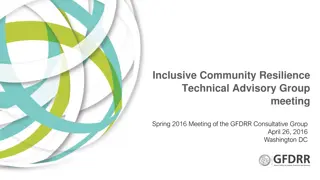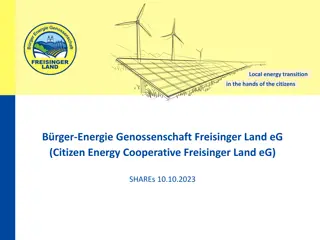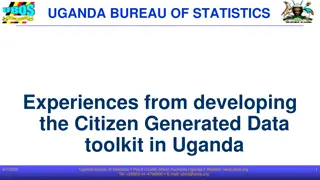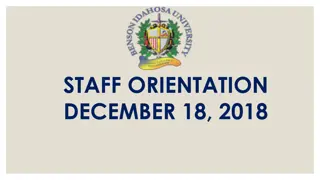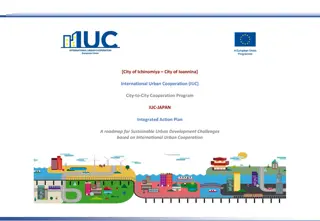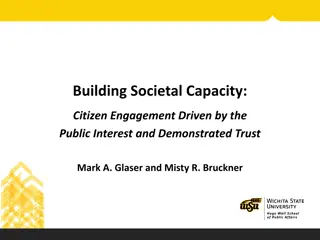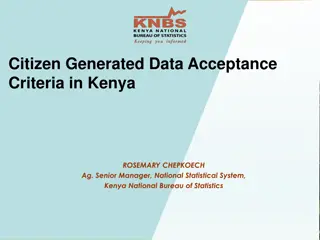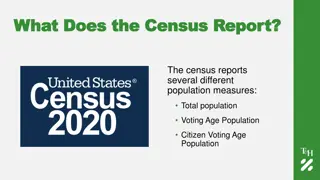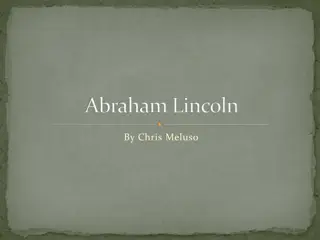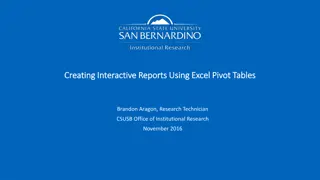Exploring Citizen Science with Zooniverse: An Interactive Guide
Delve into the world of citizen science through the Zooniverse platform, where ordinary individuals collaborate with professional scientists on various research projects. Discover the diverse examples of citizen science, from medical research to astronomy, and learn how you can contribute to classifying data and performing scientific calculations. Explore the rich history of Zooniverse and get involved in exciting projects ranging from ocean life to ancient writings. Engage in hands-on activities on the Zooniverse website and participate in discussions based on your findings.
Uploaded on Oct 01, 2024 | 0 Views
Download Presentation

Please find below an Image/Link to download the presentation.
The content on the website is provided AS IS for your information and personal use only. It may not be sold, licensed, or shared on other websites without obtaining consent from the author. Download presentation by click this link. If you encounter any issues during the download, it is possible that the publisher has removed the file from their server.
E N D
Presentation Transcript
Citizen Science with the Zooniverse
What is citizen science? The term citizen science refers to scientific research that is conducted by ordinary people (non-scientists) Usually, it involves people working with professional scientists
Citizen Science Example medical research
Citizen Science Example medication testing
Citizen Science Example psychology research
Citizen Science Example using your computer to perform scientific calculations
Citizen Science Example helping to classify data such as: Zooniverse Help me classify some galaxies at Galaxy Zoo
Zooniverse History Started in 2007 with Galaxy Zoo Watch recap YouTube video (1:28-minutes) Galaxy Zoo was so successful that the idea was expanded into the Zooniverse The Citizen Science Alliance (CSA) develops and maintains the Zooniverse The CSA works with partners such as universities to create new Zooniverse projects Zooniverse has more than 800,000 people helping scientists to classify all kinds of data
What is Zooniverse? A portal to many research projects that are suitable for average citizen help Projects to classify: ocean life, weather, ancient writings, astronomy and more
Activity Steps Get a worksheet Go to the Zooniverse website Explore a Zooniverse project and answer the worksheet questions Some answers may require reasoned inference because the website won t say exactly After 25 minutes, we will discuss everyone s worksheet answers
Demonstration https://www.zooniverse.org/
Let's try it! www.zooniverse.org
Review and Discussion 1. Which project did you pick? 2. What was your impression of the classification process? 3. What does your project monitor and how? 4. Why is it being monitored? 5. How does this research project benefit society? 6. What change or feature could be made to the research project to improve it?
References "Citizen Science." Scientific America. Scientific America, n.d. Web. 15 Jul 2013. http://www.scientificamerican.com/citizen-science/ "How SETI@home works." SETI@Home. University of California, n.d. Web. 16 Jul 2013. http://seticlassic.ssl.berkeley.edu/about_seti/about_seti_at_home_1.html "Purpose." Zooniverse: Real Science Online. Citizen Science Alliance, n.d. Web. 16 Jul 2013. https://www.zooniverse.org/about
Image Sources 1 of 2 http://commons.wikimedia.org/wiki/File:Doctor_consults_with_patient_(7).jpg, 1990 Bill Branson, National Cancer Society, National Institutes of Health; public domain. http://commons.wikimedia.org/wiki/File:Woman_consults_with_pharmacist.jpg, 2005 Rhoda Baer, National Cancer Society, National Institutes of Health; public domain. http://commons.wikimedia.org/wiki/File:US_Navy_111006-O-KK908- 026_An_MRI_machine_is_set_up_at_the_Role_3_Medical_Facility_at_Joint_Operating_Base,_Bastion,_Afgh anistan.jpg, 2011 U.S. Navy; public domain. http://commons.wikimedia.org/wiki/File:FMRI.jpg, 2004 Washington Irving, UK; public domain. http://commons.wikimedia.org/wiki/File:Arecibo_Observatory_Aerial_View.jpg, 2010 H. Schweiker/WIYN and NOAO/AURA/NSF; public domain. http://commons.wikimedia.org/wiki/File:Andromeda%27s_Colorful_Rings.jpg, 2013 ESA/NASA/JPL- Caltech/NHSC; public domain. http://commons.wikimedia.org/wiki/File:Fda_logo.jpg, 2014 U.S. Food and Drug Administration; public domain.
Image Sources 2 of 2 http://commons.wikimedia.org/wiki/File:POxy.v0024.n2383.recto.jpg, 2012; public domain. http://commons.wikimedia.org/wiki/File:30_Doradus-_The_Growing_Tarantula_Within- _602512main_30doradus_665.jpg, 2011 X-ray: NASA/CXC/PSU/L. Townsley et al.; Infrared: NASA/JPL/PSU/L. Townsley et al.; public domain. http://commons.wikimedia.org/wiki/File:Sunflower_sea_star.jpg, 2005 U.S. Fish and Wildlife Service, National Digital LIbrary; public domain. http://commons.wikimedia.org/wiki/File:Cat_on_laptop_-_Just_Browsing.jpg, 2009 Wilson Afonso, Sydney, Australia, Creative Commons Share with attribution. http://commons.wikimedia.org/wiki/File:DEXA_scanner_in_use_ALSPAC.jpg, 2011 Nick Smith Photography, Creative Commons Attribution-Share Alike 3.0 Unported license. http://en.wikipedia.org/wiki/File:SETI@home_Multi-Beam_screensaver.png, 2008 Namazu-tron, GNU Lesser General Public License ( A snapshot of the SETI@Home BOINC Client software on Microsoft Windows.)
